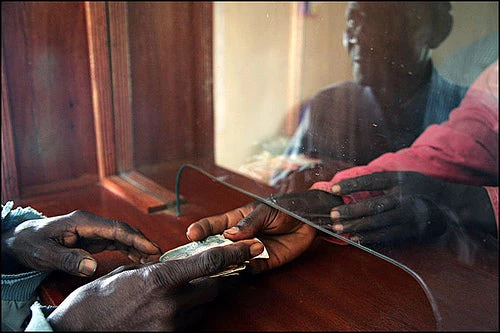This post is part of our Closing the Gap: Financial Inclusion blog series, which shares the views of selected experts and practitioners on different financial inclusion topics.
Recent successes in linking lower income clients to the formal banking system via mobile banking and agent solutions have shifted attention away from non-bank deposit taking institutions. Indeed, the use of modern technology can reduce the costs of service delivery and facilitate the availability of banking services in less densely populated areas. Yet, experience indicates that the roll-out and uptake of these innovative delivery channels is limited by the absence of suitable products and the banking sector’s interest in this market segment. While banks have started to explore delivering financial services to lower income segments of the population, these clients are not likely to become their core focus. Same for mobile network operators, who are mostly interested in increasing customer retention rates and offering additional income sources for their agent networks, but do not necessarily focus on providing a range of suitable financial products in a supervised setting. For both players, catering to otherwise unbanked segments of the population is more an add-on, something additional to explore in good times, but – let’s be honest - not a priority during bad times.

So why have we not paid more attention to these market players and included them in our innovative approaches? We think that the answer to this is threefold. Most of us working on financial sector development don’t really know enough about these entities, as we lack data on and experience with the specificity of member-based organizations and their supervision. Furthermore, the reputation and financial viability of cooperative financial institutions suffered from having to channel government and donor funds to target populations, or capture by local elites. Finally, CFIs are also frequently not sufficiently integrated within the financial sector to reap economies of scale and link into the existing financial infrastructure. Reforming them will take time and effort. Yet, where the preconditions are well aligned - such as in Albania, Brazil, Germany, Mozambique and the US - , these entities play a crucial role in bridging the financial inclusion divide, and providing a sustainable range of suitable financial services to their members.
Looking ahead, it is time to again pay more attention to cooperative and other non-bank deposit taking financial institutions and their role for financial inclusion. That is one of the goals of the UN’s International Year of Cooperatives (2012). We support this, and have recently created a Community of Practice for CFIs within the World Bank Group.
Several tasks lay ahead:
First, we need to bridge knowledge gaps. Do we really understand the difference between CFIs and banks, and their role in financial inclusion? What are the governance issues?
Second, in order to support their sound operation and bridge the vast deficiencies in oversight, more work needs to be done to bring CFIs under efficient oversight that involves both external auditors and formal financial supervision, once they reach certain scale. The ICURN Principles for Supervision of CFIs provide a good start, but more work needs to be done to advance in this area.
Third, most CFIs are not well integrated in the financial infrastructure of a country. They either do not participate in the national payment system infrastructure, credit bureaus, and consumer protection framework, or pay a high premium for using those services. How can we better integrate them?
Finally, to reap economies of scale, cooperative financial institutions need strong second-tier networks that provide capacity building, liquidity support, and access to affordable payment or financial management systems. Without this, small institutions will probably not be able to weather today’s technological challenges and live up to their potential to bridge gaps in financial inclusion.
These challenges merit our attention, and we look forward to continuing the conversation with readers, as well as the sector-at-large.


Join the Conversation